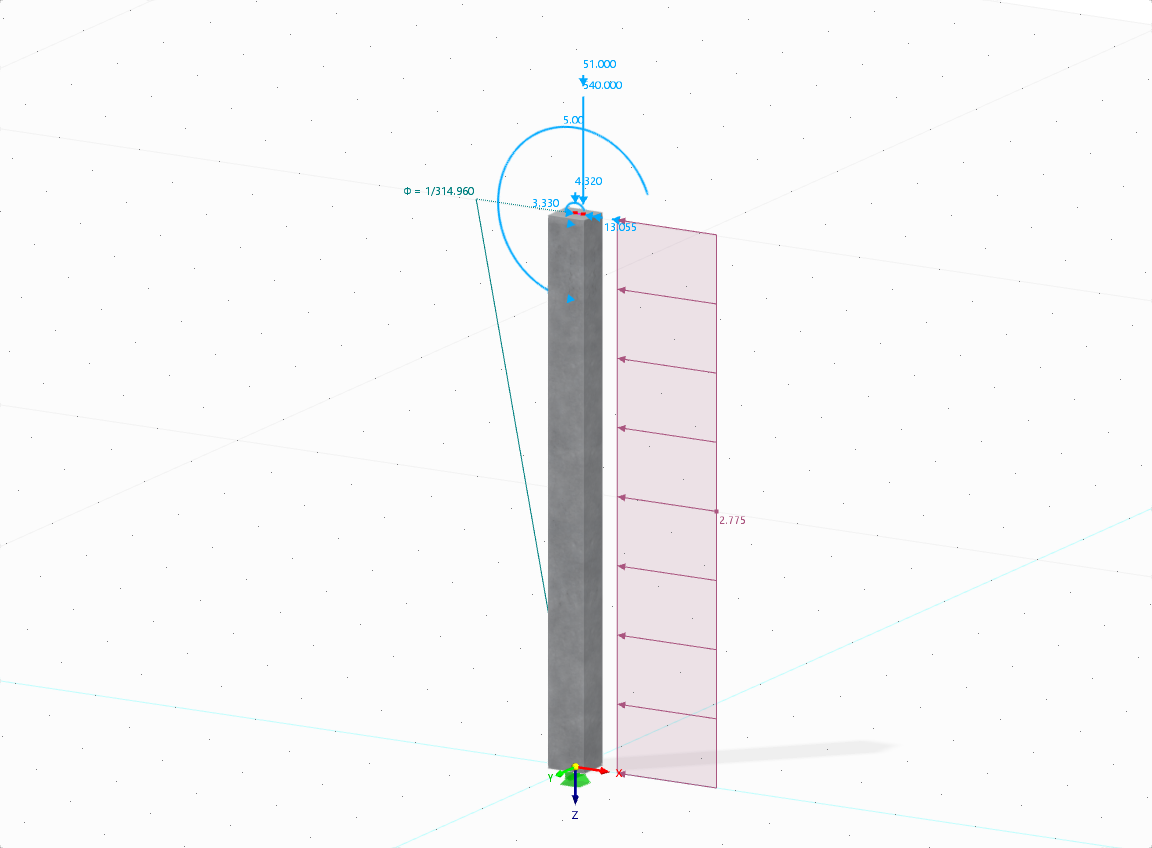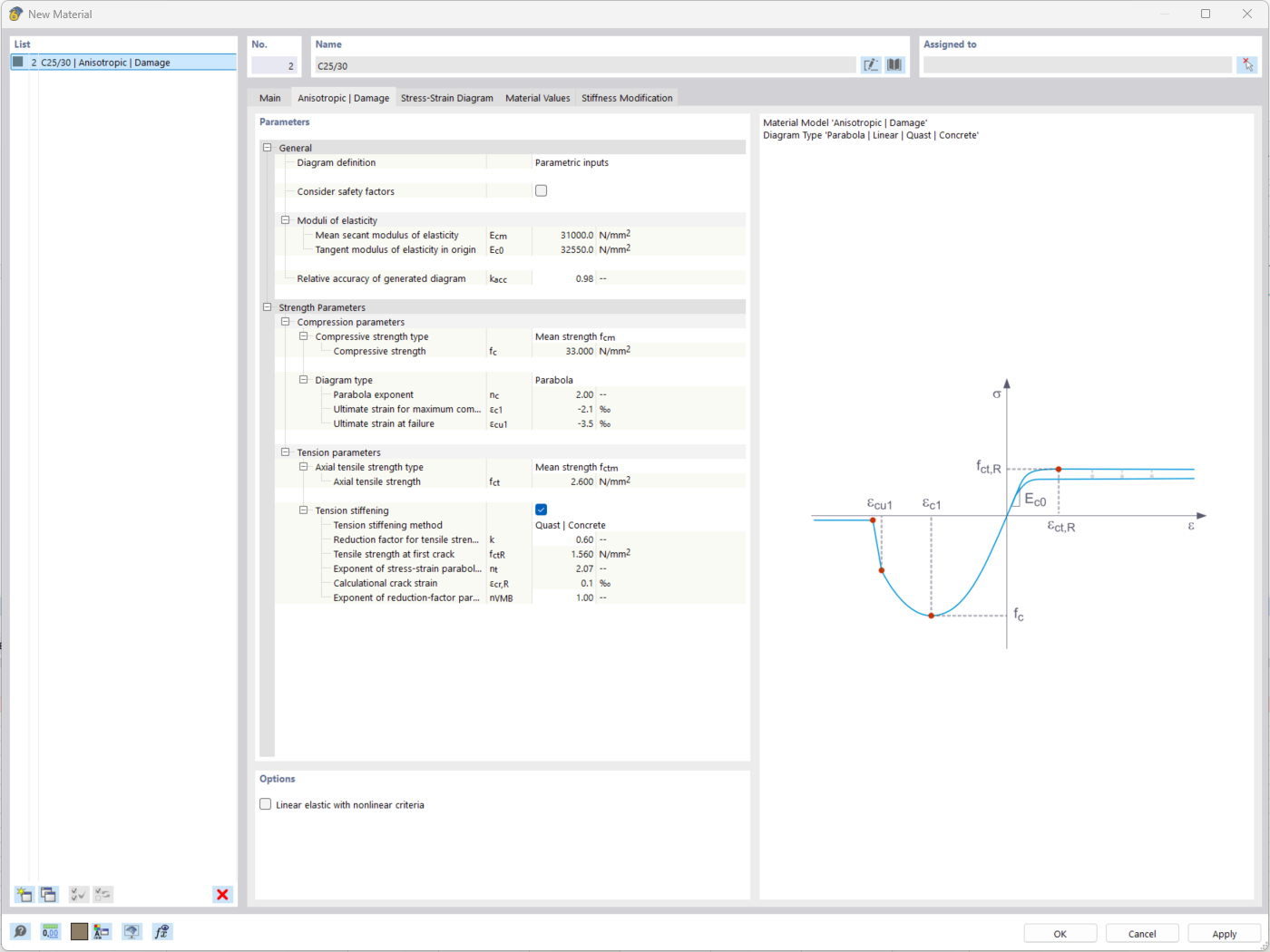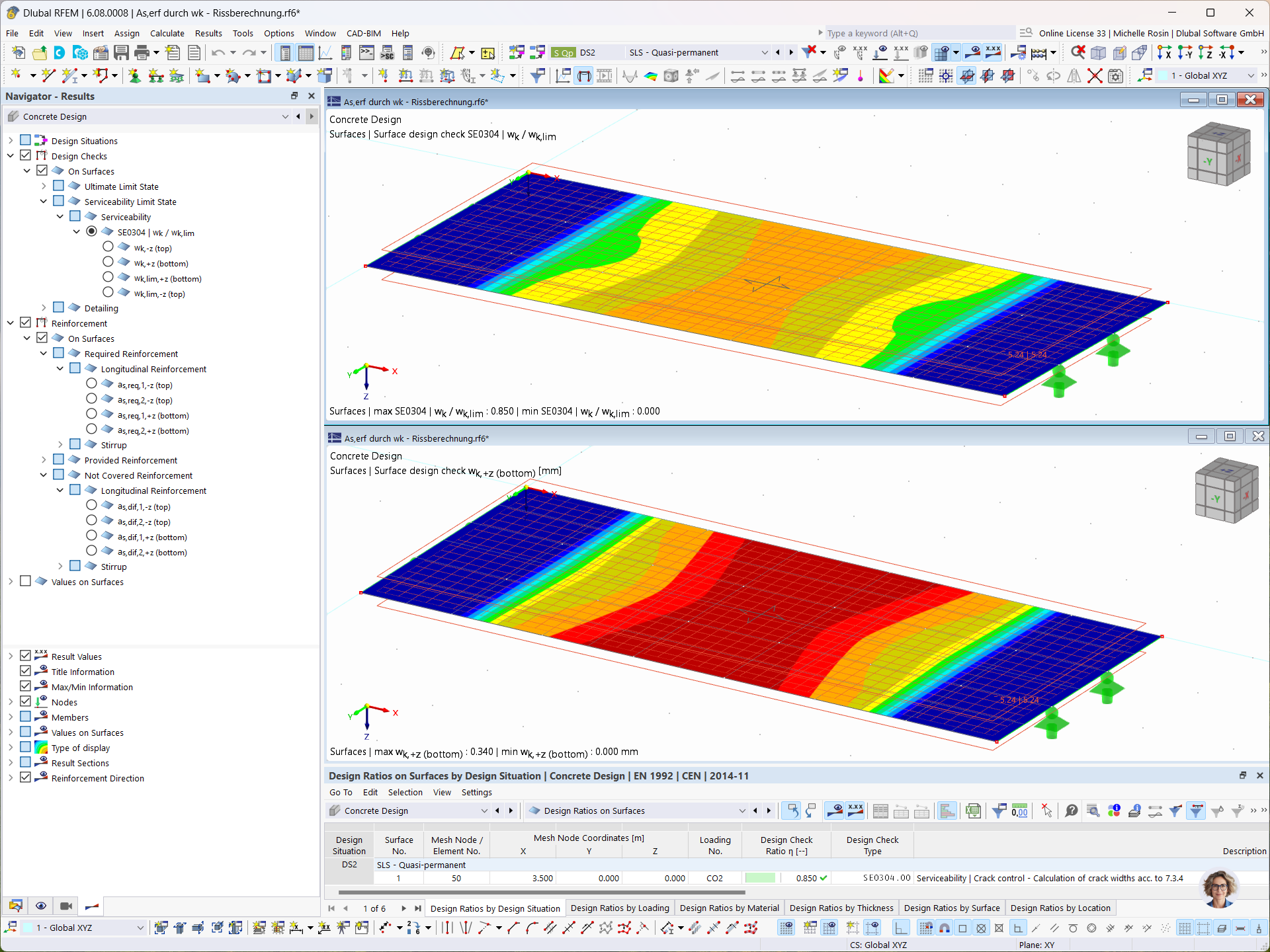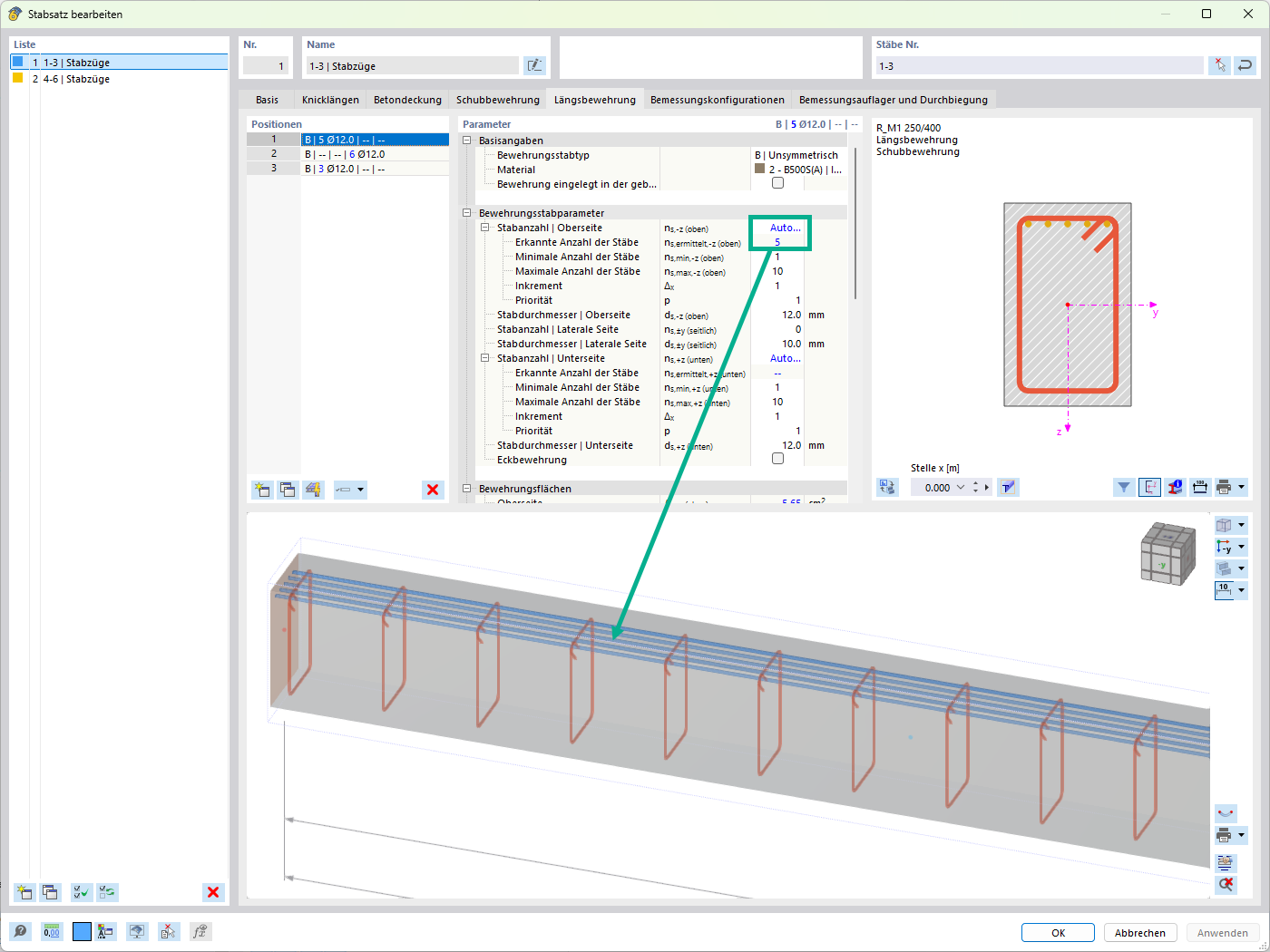Modeling Options
For dowel force distribution, the position and stiffness of a base plate are governing. Furthermore, the modeling of a dowel support is also important for realistic force distribution.
In Model A, a base plate has been created as a "rigid" surface, and possible plate bending is not considered here. In Model B, a base plate has been created using thickness and material with realistic stiffness. The openings of dowel holes are closed by rigid surfaces and there are linear nodal supports in the center of the rigid surfaces.
Model B is much more accurate, but the linear nodal supports, which also absorb compression, and the filling of the dowel holes with rigid surfaces still lead to a distorted plate deformation that is too small.
Model C has been derived from Model B. Only the rigid surfaces have been removed, and the dowel hole edges have nonlinear line supports. The nonlinearity is defined in a way so that the supports are not effective when subjected to compression. In contrast, tension should be absorbed. The base plate support is also modeled nonlinearly. In this case, the compression should be transferred to the soil, as a bedding fails when lifting forces occur.
Result Evaluation with Regard to Modeling
Model A: Due to the "infinite" stiffness, the deformation of the structure is underestimated. A nonlinear bedding of the plate cannot be affected, as there are no deformations in the plate. Similarly, the rigid base plate causes no realistic dowel force distribution.
Model B: This model is much more accurate, but the linear nodal supports absorbing the compression and the dowel holes filled by rigid surfaces always lead to a distorted deformation, which is too small.
Model C: The real stiffness combined with the nonlinear surface elastic foundation and nonlinear line supports allow for plate bending, including bending in the tension area, and supporting effects near the plate edge. Therefore, there are also significantly higher dowel forces than in Models A and B.
Determining and Evaluating Dowel Forces
The result diagram of line supports is used to evaluate the support forces. This can be smoothed linearly or constantly and the dowel force can be obtained very quickly via the perimeter. The numerical values of the anchoring forces clearly show the importance of the realistic modeling.
In Model A, the dowel forces are seriously underrated. This is the worst case and should not be applied in practice. In Model B, the described support design causes support forces that are too high. This solution is conservative and usually not the most efficient. Model C shows realistic distribution of support forces, which is affected by plate bending and effective surface elastic foundation. This model provides optimized and efficient results for the dowel selection. Furthermore, the determined surface compression of the base plate can be used to evaluate the required concrete strength.




































.png?mw=512&hash=4a84cbc5b1eacf1afb4217e8e43c5cb50ed8d827)













_1.jpg?mw=350&hash=ab2086621f4e50c8c8fb8f3c211a22bc246e0552)


-querkraft-hertha-hurnaus.jpg?mw=350&hash=3306957537863c7a7dc17160e2ced5806b35a7fb)





.png?mw=600&hash=49b6a289915d28aa461360f7308b092631b1446e)













